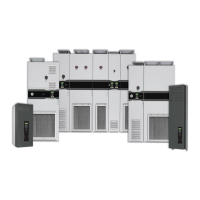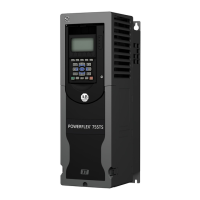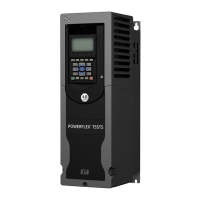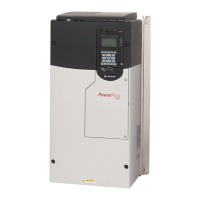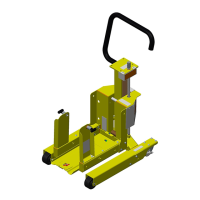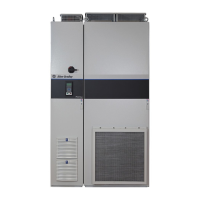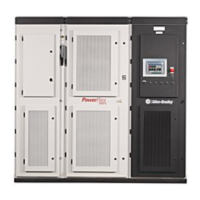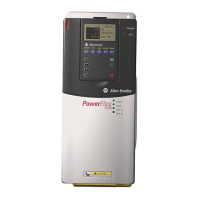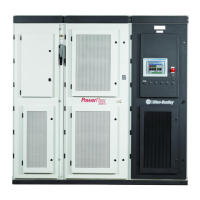42 Rockwell Automation Publication DRIVES-AT005D-EN-P - May 2022
Chapter 4 Non-regenerative Bus Supply Configuration
Sizing Non-Regenerative Bus Supply
Use one of the following methods to size the PowerFlex 755TM non-regenerative bus supply.
Basic Sizing of the Non-Regenerative Supply
To perform the basic sizing calculations, you need the following information:
•System AC source voltage.
• Inverter/drive product family and catalog numbers.
• Inverter overload duty ratings normal duty (ND) or heavy duty (HD) and the catalog numbers for each inverter/drive connected on the
common DC bus.
1. Sum/total the DC input amp ratings of the respective inverters, based on the application normal duty(ND) / heavy duty(HD) ratings. See the
tables in Appendix A
. Assume that the drives are motoring 100% of rating.
2. Select a single- or dual-density PowerFlex 755TM non-regenerative supply, based on the normal duty (ND) or heavy duty (HD) DC output
current rating for the system AC voltage that meets or exceeds the worst case calculated normal duty DC output current value from step 1.
To achieve the required rating, it may be necessary to configure a parallel combination of single and/or dual density modules. See
Paralleling PowerFlex 755TM Non-regenerative Modules on page 41
for more information. The basic sizing method assumes that there is no
requirement for regeneration. If the application requires regeneration, perform the Advanced Sizing of the Non-regenerative Supply
calculations.
3. Verify that the system AC and DC bus bars and cables are sized to support the expected current. The PowerFlex 755TM system standard bus
bars are rated for 3000 A DC and optional (-P46) 4700 A DC. All DC bus bars in the common DC bus lineup must have the same amp rating.
See PowerFlex 755TM System DC Bus Ratings on page 99
for more information about the DC bus bar ratings and options. Ensure that you
have adequate AC and DC overload and overcurrent devices capable of protecting the non-regenerative bus supply and associated AC and
DC circuit conductors and bus bars.
4. Verify that the DC bus capacitance to output amps ratio (µF/A) meets or exceeds the target value for the system AC voltage and combination
of connected inverter/drives. See DC Bus Capacitance Calculation Method on page 87
.
5. Verify that the selected bus supply is capable of precharging the total connected DC bus capacitance. Sum the internal DC bus capacitance
values for all connected AC inverters/drives and additional capacitor modules. Include the internal capacitance of the PowerFlex 755TM non-
regenerative bus supply in this calculation.
6. See the tables in Appendix A
for internal DC bus capacitance values used in PowerFlex 750-Series drives, PowerFlex 755TM common bus
inverters, Kinetix 5700 servo drives, and PowerFlex 755TM non-regenerative supply optional internal DC bus capacitor banks. The tables in
Appendix A show the maximum external DC bus capacitance values and corresponding precharge delay times for PowerFlex 755TM non-
regenerative bus supply. If bus supply modules are paralleled, sum the maximum external bus capacitance values for each module to
determine the total maximum DC bus capacitance. Set the PowerFlex 755TM non-regenerative supply precharge delay times such that the
total DC bus capacitance can be precharged by the non-regenerative supply.
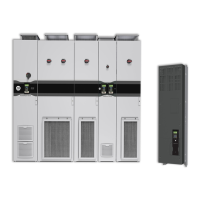
